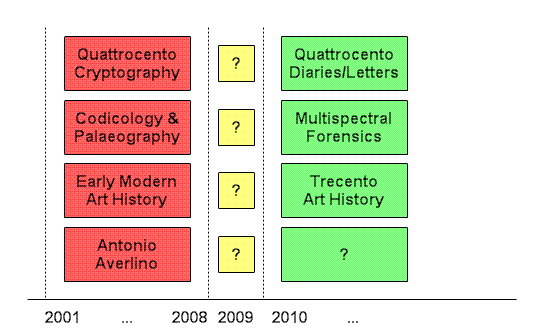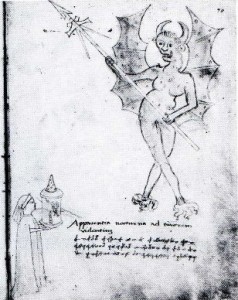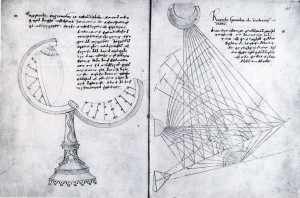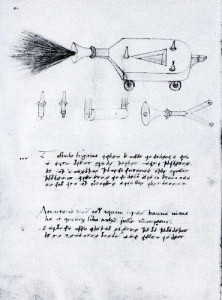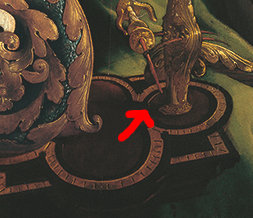I suppose this is the review I’ve spent two years steeling myself for. No matter what book critics may say, reviewing other people’s books is an easy word-game to play (typically revolving around inserting themselves into the commentary): whereas putting your own writing under the same spotlight is something closer to therapy. What, with the benefit of hindsight, do I now make of “The Curse of the Voynich“?
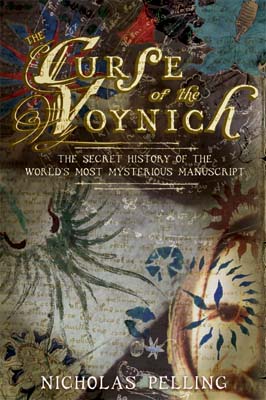
“The Curse of the Voynich”, by Nick Pelling
Firstly, the title didn’t work. To an avowedly rationalist commentator such as myself, a “curse” is merely a kind of game a community plays with itself when its members all willfully look away from the ball while wondering why nothing is moving. Fair enough: but the Voynich’s own mythology is so close to fiction that the word’s far stronger associations with literary curses (the Curse of Blackadder, for example) predominates. This means that people’s first reaction is normally to wonder whether the book is some kind of curious historical fiction: so, a bit of an own-goal there.
Secondly, the cover didn’t work: Alian Design did an excellent job of interpreting the brief I sent them, and produced something that was evocative and uncertain in all the ways I intended. But, again, people have a low tolerance for uncertainty: and typically “read” the cover as somehow implying that the book lacks focus. Cover art has a rigidly defined set of conventions, which publishers (even small ones) can only pragmatically subvert, not replace: the absence of a picture of the VMs on the cover (quite literally) sent out the wrong message to buyers. This was own-goal #2.
Thirdly, the editing didn’t work. Though my friend Tabby Magas splendidly subedited my clausally-complex original draft, the overwhelming pay-per-page commercial model for digital print meant that I was forced to squeeze the whole thing into under 240 pages to keep the final price under £10 – roughly a hundred less pages than the content dictated. More pictures to support the visual arguments would have been nice, but these too used up too much of my limited page budget. And so the writing suffered.
Fourthly, the content didn’t work. Even though modern historians now routinely make use of a hugely multi(ple-)media set of influences / evidences when forming their arguments and discussions, few would dare to take on the Voynich Manuscript as a subject because of the overwhelming variety of strands that would need tackling and integrating (let alone try to draw a conclusion based on such a multi-disciplinary approach). “The Curse” set out to build an entirely new research field: while it is true that many elements of “forensic codicology” had been carried out before, I was trying to bring them all together in perhaps the most concerted way yet attempted. Essentially, I was trying to do to the many historical methodologies what mechatronics did for mechanical engineering and electronics – bring them together in parallel and direct their focus on a tangible problem. But, almost inevitably, this was too ambitious a project – to do this properly would require an entire history department, not some baldy bloke in his second bedroom with a wallful of old books, no matter how persistent he happens to be.
Finally, nobody wanted an answer. People inside the Voynich research field seem blissfully content with the irascible status quo that lays upon everything like a stifling smog: feathers get hugely ruffled if anyone so much as suggests a century for the manuscript, let alone a country, town, or (heaven forfend) an individual, never mind if they try to back it up with anything approaching an argument. At the same time, few VMs outsiders have any great interest in such questions: to most people, it’s just a historical curiosity (if, indeed, it is anything at all).
I also received some hostility about my openness to Steve Ekwall’s claims: yet only three people had written anything particularly cogent about the VMs (Rene Zandbergen and Mary D’Imperio were the other two). To me, Steve Ekwall poses a greater mystery then the VMs itself: while I have a rational explanation for everything in the VMs, I have no such explanation for Steve Ekwall. All I can do is observe that his claims about what the VMs actually is do chime to a remarkable degree with what it took me years to grasp, despite the fact that he apparently has no useful art historical grasp of the object at all. And your own rationalization for all that is… what, exactly? Of course, I could (just like everyone else does) simply pretend Steve doesn’t exist: but what is there to be scared of?
No matter: probably the biggest single criticism of my book project is that I exceeded the amount that readers could accept all in one go – it was all too much, all too soon. Yet even if (as is always possible in historical research) the whole Averlino hypothesis is somehow proven wrong, I’m pretty sure I will turn out to be at least “the right kind of wrong” – looking in the right place for the right evidence for the right reasons should be nothing to be ashamed of. In time, people will doubtless catch up and overtake me, to the point that everything in “The Curse” will stop looking like some kind of mad hallucinatory multi-dimensional take on an enigmatic Renaissance curio, and instead become high historical orthodoxy. When you’re ready, I’ll still be here.
Anyway, here’s the first punchline of the day: a brief appendix to “The Curse” that you probably weren’t expecting.
Following my recent post on Giovanni Fontana, Augusto Buonafalce kindly pointed me towards a recent single-page note he wrote for Cryptologia, suggesting that a memory machine called a “speculum” (resembling a set of concentric disks with alphabets on) designed by Giovanni Fontana might well have somehow inspired Leon Battista Alberti’s famous code wheel. But how did that idea travel? In the Quattrocento, hardly anybody knew about Giovanni Fontana’s secret works – even his encyclopedia (composed around 1450) didn’t appear in print for a further century.
In my book, I argued that when Antonio Averlino left Milan in 1465, he went to Rome, and was there when Alberti was researching and writing his little book on ciphers. I further argued that Alberti’s book has a dialogue-like summary of his debate with a different cryptographer (who, like Averlino, favoured transposition ciphers over substitution ciphers), which I argued was probably Averlino. That is to say, I concluded that the two men were probably looking at revolving cipher machinery at the same time and place. In much the same way that I don’t believe three Dutchmen independently invented the telescope at the same time, I don’t believe that Averlino and Alberti both happened to invent revolving cipher machinery at the same time and place – I believe that they were at least aware of each other, if not actually working in some kind of edgy collaboration.
But how might the idea of a “speculum” have travelled to Rome? Fontana lived until 1454, probably in Padua or nearby Venice – yet we can directly place Averlino in Venice and Padua in 1450 and 1461. What are the odds that the secrets-hungry Averlino, broadly the same kind of freelance “travelling master” as Andrea Mantegna, learned of Fontana’s mnemonic wheel directly from Fontana himself in Padua, and then brought the idea with him to Alberti in Rome? In the absence of any better information, this is now what I believe probably happened.
The odds that the secretive (and secrets-obsessed) Averlino was the person behind the VMs have already been shortened, thanks to my recent discovery (from a brief mention by Lynn Thorndike) that Averlino showed off his elegant (but now lost) herbal written in the vulgar tongue in Bergamo – and if there is a better candidate for the plaintext of the VMs’ herbal pages, I have yet to find it.
So now, here’s the second punchline of the day, which is, frankly, as hallucinatory as anything I’ve encountered.
One thing Steve Ekwall repeats over and over is the VMs’ enciphered text’s reliance on the “mirror”. The problem is that Steve has no idea what that actually means – basically, what could a “mirror” be in this kind of context? Somewhat disturbingly, the Latin for mirror is “speculum“. Could it be that it is Fontana’s letter-rearranging “speculum” that Steve Ekwall has been referring to all these years? Myself, I wouldn’t really like to say – but it’s a coincidence that makes me shudder at the thought.
My final bombshell of the day is that all of this basically closes the loop for my whole research programme – that, within the limits of the evidence currently available, I feel I have performed as complete an intellectual pathology on the VMs as is currently possible, which sharply reduces my level of curiosity about it.
I’m therefore now taking a long-term break, both from the VMs and from the blog (though please stay subscribed, as I shall still occasionally post book reviews). I’ll leave my various research leads (on dating, on f57v, and on the zodiac section) open for another day, they’ll probably still be there when I return. 🙂
But all the same, let me know if you find anything good!
